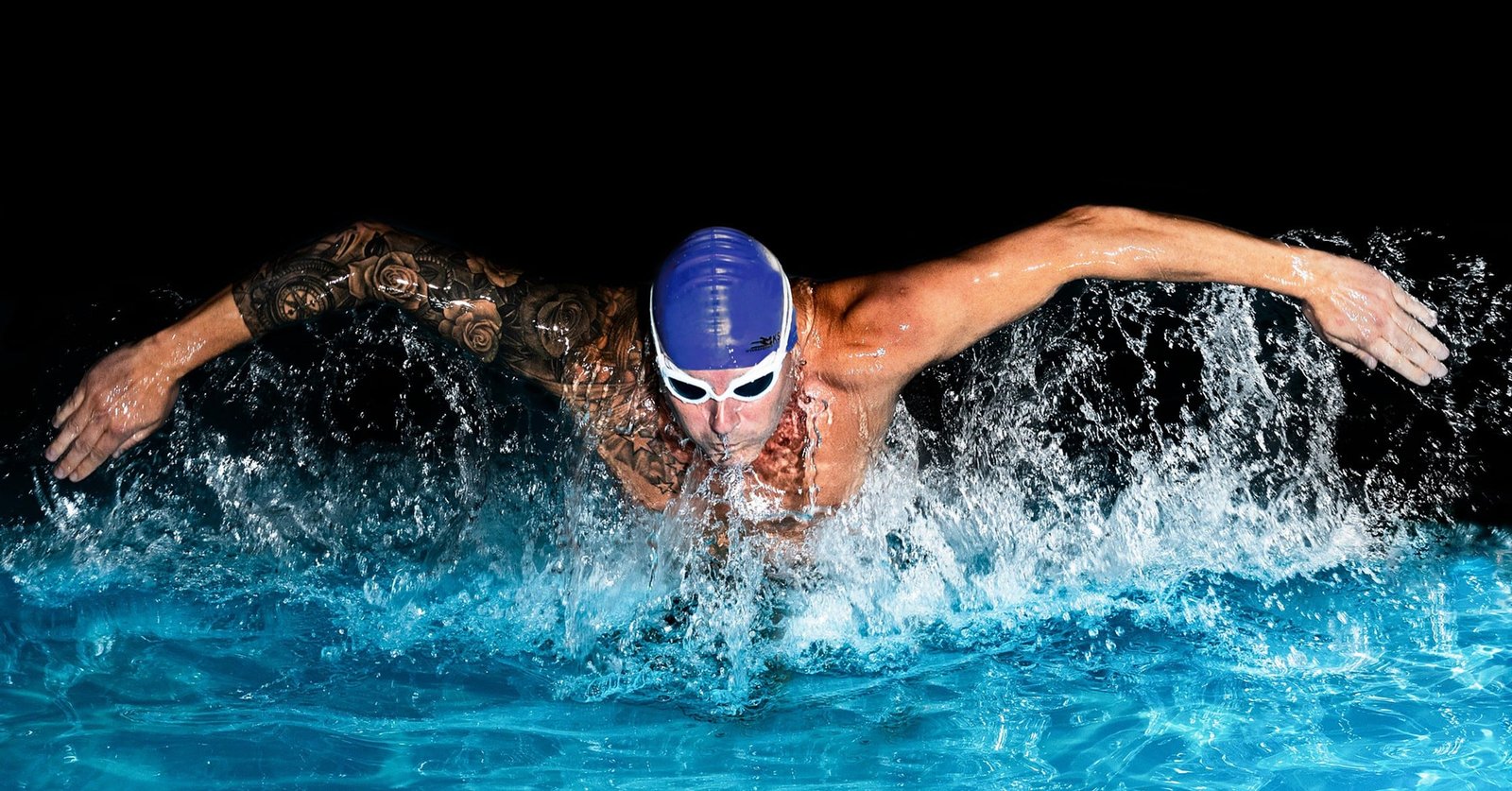Some sports are more exhausting than others. But what is the most tiring sport?
Athletes and fitness enthusiasts often debate this topic. From the constant movement in soccer to the grueling endurance required in marathon running, each sport has its unique demands. Some sports test your strength, others your stamina, and some your mental toughness.
Understanding which sport is the most tiring can help you appreciate the dedication and hard work of athletes. It can also guide you in choosing a sport that matches your fitness goals and personal interests. Whether you’re a casual player or an aspiring athlete, knowing which sports push the limits can inspire you to challenge yourself. So, let’s explore what makes a sport truly exhausting and why.

Credit: www.sportskeeda.com
Factors Contributing To Tiredness
When discussing the most tiring sport, it’s essential to look at the factors contributing to tiredness. Various elements influence how exhausting a sport can be. These range from the physical demands placed on the body to the mental fatigue that athletes experience. Let’s explore these factors in detail.
Physical Demands
Physical demands play a significant role in how tiring a sport is. High-intensity activities require continuous energy. Sports like soccer and basketball involve constant running. These actions lead to quick exhaustion. Endurance sports like marathon running are also very tiring. They push the body to its limits for long periods. Physical strength and stamina are crucial in these sports. Athletes must train hard to meet these demands.
Mental Fatigue
Mental fatigue also contributes to tiredness in sports. Athletes need to stay focused. Concentration is key in sports like tennis and chess. Mental fatigue can be as draining as physical effort. Decision-making under pressure adds to the tiredness. Maintaining a high level of mental alertness is challenging. Both the mind and body need to work together. Effective mental conditioning is necessary for athletes. This helps them perform at their best.

Credit: www.insidermonkey.com
Measuring Endurance
Endurance is a key factor in determining the most tiring sport. Understanding how to measure endurance can help gauge the physical demands of different sports. This section will explore some of the key methods used for measuring endurance.
Heart Rate Monitoring
Heart rate monitoring is a common method to measure endurance. It tracks how hard your heart works during physical activity. Athletes wear heart rate monitors to get real-time data. This data shows how their heart responds to exercise. A higher heart rate indicates more intense effort. Monitoring heart rate helps athletes understand their limits.
| Sport | Average Heart Rate (bpm) |
|---|---|
| Running | 150-180 |
| Swimming | 140-170 |
| Cycling | 130-160 |
Vo2 Max Testing
VO2 Max testing measures the maximum amount of oxygen the body can use. It is a key indicator of cardiovascular fitness. Athletes often perform this test on a treadmill or stationary bike. The test involves increasing exercise intensity until exhaustion. The VO2 Max value is then calculated based on oxygen intake and output. Higher VO2 Max values indicate better endurance.
Key steps in VO2 Max Testing:
- Wear a mask connected to an oxygen analyzer.
- Start exercising at a moderate pace.
- Gradually increase the intensity.
- Continue until you can no longer maintain the pace.
- Analyze the collected data to determine VO2 Max.
Comparison Of Sports
Many sports challenge athletes in different ways. Some sports test speed, others strength. But some sports are very tiring. These sports push human limits. We will compare two of the most tiring sports: Marathon Running and Triathlon.
Marathon Running
Marathon running is a long-distance race. The standard marathon distance is 26.2 miles (42.195 kilometers). It is a test of endurance and stamina. Runners must train for months. They need to build their physical and mental strength.
A marathon is a continuous effort. There are no breaks or pauses. Runners deal with fatigue, muscle cramps, and dehydration. The weather can also be a challenge. Marathon runners often run in hot or cold conditions.
Here are some key aspects of marathon running:
- Distance: 26.2 miles
- Training Time: Several months
- Physical Challenges: Endurance, muscle fatigue, hydration
- Mental Challenges: Focus, motivation, mental toughness
Triathlon
The triathlon is a multi-sport event. It includes swimming, cycling, and running. The standard distance is the Olympic triathlon. This includes a 0.93-mile swim (1.5 kilometers), a 24.8-mile bike ride (40 kilometers), and a 6.2-mile run (10 kilometers).
Triathletes must train for three different sports. Each sport demands different skills and strengths. Swimming requires strong upper body muscles. Cycling tests leg strength and stamina. Running challenges overall endurance.
Triathletes face transitions between sports. They need to change gear quickly. This adds to the physical and mental challenge. Here are key aspects of triathlon:
- Sports Included: Swimming, cycling, running
- Standard Distance: 0.93-mile swim, 24.8-mile bike, 6.2-mile run
- Training Time: Several months for all three sports
- Physical Challenges: Different muscle groups, endurance, transitions
- Mental Challenges: Focus, strategy, adaptability
Both marathon running and triathlon are very tiring sports. They push athletes to their limits. They require dedication, training, and mental strength. Athletes in these sports are among the fittest in the world.
Extreme Endurance Events
Extreme endurance events push athletes to their physical and mental limits. These events require immense stamina, determination, and resilience. Participants often train for years to compete. The challenges faced during these events are unparalleled.
Ironman Triathlon
The Ironman Triathlon is one of the most grueling endurance events. It consists of a 2.4-mile swim, a 112-mile bike ride, and a 26.2-mile run. Athletes must complete this within 17 hours. The physical and mental demands are immense. Many athletes struggle with fatigue and muscle cramps. The Ironman tests their limits in every way.
Ultramarathons
Ultramarathons are races longer than the traditional marathon distance. Some of these races span over 100 miles. Participants run on varied terrains, including mountains and deserts. The conditions can be extreme, with intense heat or freezing cold. Runners often battle sleep deprivation and exhaustion. Ultramarathons push endurance to the extreme.
Training For Endurance
Training for endurance is key in sports requiring high stamina. Building endurance helps athletes perform longer and recover faster. This section dives into the essentials of endurance training.
Strength Conditioning
Strength conditioning improves muscle power. Strong muscles support endurance efforts. Weight lifting, squats, and push-ups are good exercises. These enhance muscle strength and endurance. Consistent workouts are crucial for progress.
Interval training boosts stamina too. Short bursts of high-intensity exercise followed by rest periods work best. This method improves both strength and endurance. It also burns calories and builds muscle.
Mental Preparation
Mental preparation is as vital as physical training. Athletes need a strong mind to push through fatigue. Visualization techniques help. Imagining success can improve performance.
Setting small goals keeps motivation high. Achieving these goals builds confidence. Meditation and breathing exercises reduce stress. A calm mind can focus better during strenuous activities.
Support systems also matter. Encouragement from coaches, family, and friends can boost mental strength. Positive reinforcement and constructive feedback create a balanced mindset.

Credit: defector.com
Impact On Athletes
Athletes face many challenges in the most tiring sports. The physical and mental demands of these sports can have lasting effects. Let’s explore the impact on athletes.
Physical Health Risks
Playing intense sports can lead to injuries. Common injuries include sprains, fractures, and muscle tears. Overuse injuries also occur. These come from repetitive movements. These injuries can cause long-term damage. Some athletes experience chronic pain. This pain can affect their daily lives. Recovery from injuries can be slow. It often requires physical therapy. In some cases, surgery is needed. The risk of injury is always present. This makes the sport both challenging and dangerous.
Psychological Effects
The mental toll of demanding sports is significant. Athletes often experience high levels of stress. This stress comes from competition and training. It can lead to anxiety and depression. The pressure to perform is intense. Many athletes feel this constantly. They must also handle public scrutiny. This can affect their self-esteem. Balancing sport with personal life is hard. It can lead to burnout. Mental health support is crucial. It helps athletes manage these challenges. Without it, their performance and well-being suffer.
Frequently Asked Questions
What Is The Most Exhausting Sport?
Boxing is often considered the most exhausting sport. It requires intense physical and mental exertion, stamina, and quick reflexes.
Why Is Boxing So Tiring?
Boxing is tiring because it involves continuous movement, high-intensity training, and both anaerobic and aerobic exercises.
Which Sport Burns The Most Calories?
Boxing burns the most calories. It can burn up to 800 calories per hour, depending on intensity.
Is Soccer Considered A Tiring Sport?
Yes, soccer is a tiring sport. It demands constant running, quick sprints, and high endurance levels.
Conclusion
Choosing the most tiring sport isn’t easy. Different sports challenge different muscles and stamina. Some may find marathon running the hardest. Others might say boxing is more exhausting. The key is to find a sport you enjoy. Push your limits, but also have fun.
Stay active, stay healthy. Remember, the best sport is the one you love. Keep moving, keep trying new things. Enjoy the journey, not just the destination. Every step counts.



